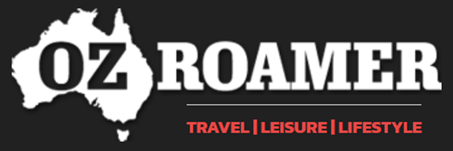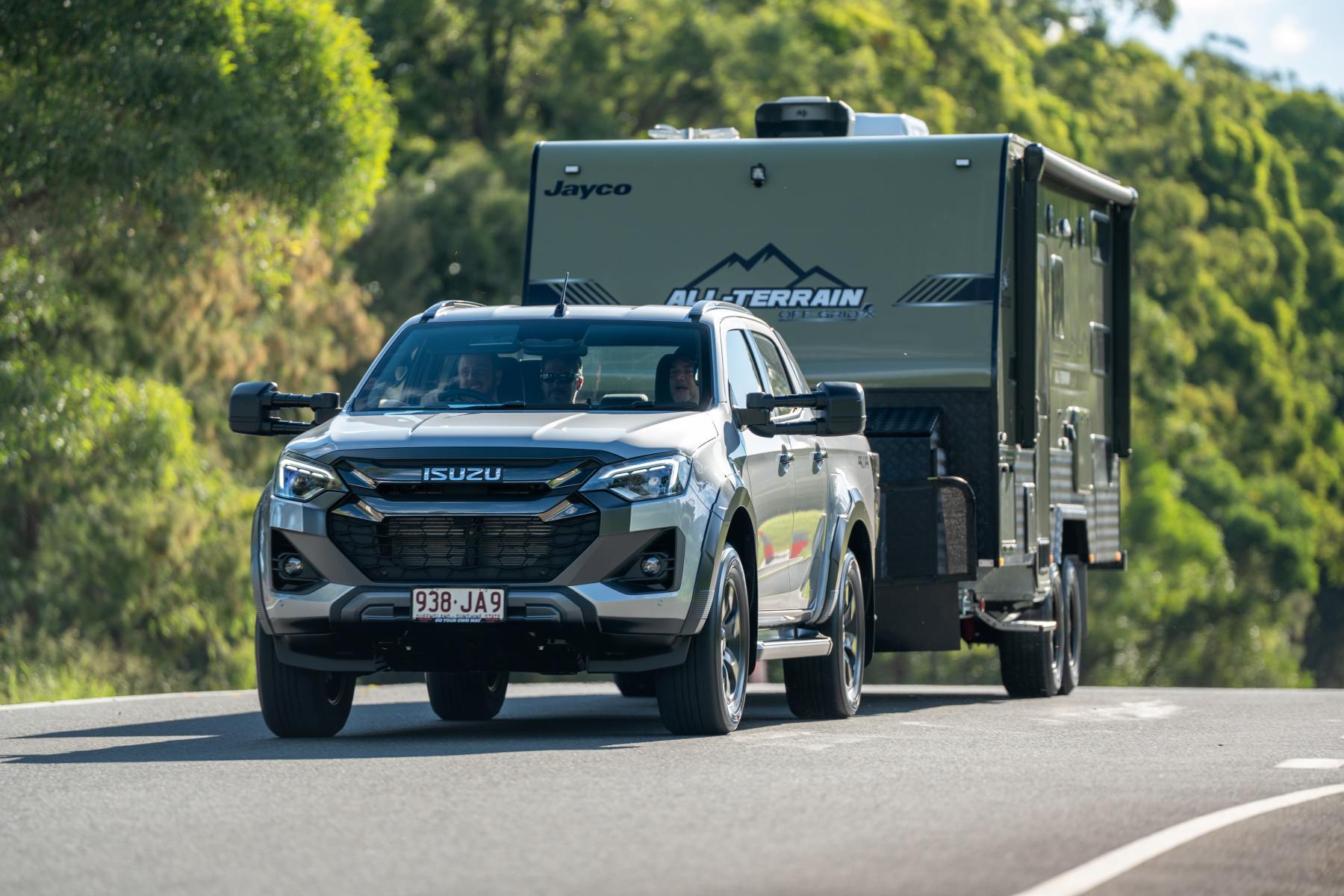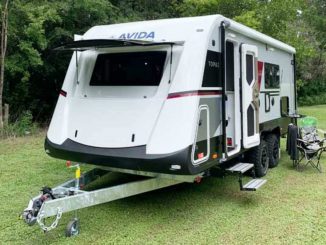Caravan financing – Caravans have never been cheap, but the pandemic surge for domestic holidays and DIY projects drove up the cost of both vans and campers.
Caravan prices also vary greatly on their size, finish, and age, costing anywhere from $30,000 to $200,000. The median in 2024 is around $70,000.
Of course, this is too much for most people to hand over in cash which is why most caravans, particularly newer ones, are financed. Australia is the ideal place to own a camper, so below we have put together a guide on how to get your hands on one, despite the steep prices.
Buying a New Caravan
When buying a caravan, it’s often possible to gain financing directly from the seller. Assuming you’re not dealing with individuals, the manufacturers and dealerships often provide financing options because of the high demand and boost in sales it provides.
Companies like Jayco Financial Services, which is the lending arm of Jayco Caravans, provide loan terms of up to 7 years when buying a caravan. Of course, they know the worth and reliability of their own products, which are used as security against the loan.
Some providers will lend up to $110,000 and beyond. It may also be possible to get balloon payments, which are a way to reduce the initial monthly repayments. However, such preferential terms are often geared towards those buying the new caravans, likely because this is where their biggest markup is, or simply the desire to popularise their flagship vehicles.
This is the biggest catch of using seller finance: they’re usually less willing to negotiate on the vehicle price, because they know what finance you have available. So, while they’re seemingly handing you money for a reasonably low APR, the total cost of the vehicle (even when factoring in interest) can offset those benefits.
The biggest benefit of using seller financing is that it’s straightforward and convenient. Many Jayco customers reported having an APR on their financing of 5.5% back when interest rates were at an all-time low. Today, it’s likely around the 10% mark, but the exact amount will depend from person to person.
Lenders Offering Financing for Caravan Purchases
- Latitude: Get access to a fixed or variable term loan of $5,000 or more. Repayments can be weekly, fortnightly, or monthly, and the loan term is anywhere between 2 and 7 years. The establishment fee is $395 and the loan service fee is $13/month.
- RAC: RAC loans are as low as 7.80% p.a. With no ongoing fees. Approvals can be pre-approved within 7 hours.
- JADE: JADE is aimed at caravan financing with loans as low as 6.85% p.a. And no impact on your credit score during the quotation.
- Credit One: Here you can access both secured and chattel mortgage options, with the choice of either new or used caravans. Loan terms range up to 7 years.
- AusLoans: New and used Caravan finance. Personalised finance rate and great service.Use our caravan finance calculator to get an estimate of caravan finance repayments.
- NAB: NAB offers personal loans for caravans that have no penalties or exit fees. Rates range from 7% to just over 20%. Up to $55,000 can be borrowed with flexible terms and no assets are needed for security.
- RACV: RACV has caravan loans from 7.49% with no ongoing fees. Funds can be secured within 24 hours.
- Stratton: Stratton Finance has fixed-rate caravan loans that range from 1 to 7 years.
- Pepper: Pepper Money offers caravan loans from 9.24% and above. Fixed rates and balloon options are available, as well as a next-day decision. Up to $110,000 is available. However, the loan establishment fee is $474 and there’s an ongoing $8.90/month administration fee.
- Credit One: Credit One offers 60-second quotes for caravan financing with offers as low as 7.98%. Credit One claims there are fixed interest rates and “minimal exit costs”.
- Jayco: Jayco offers financing for caravans with terms from 1 to 7 years. Quotes are easy, but little other information is provided upfront.
Financing by the Seller vs. Independent Loan: Which Is Better?
While there is no clear winner as to which is the better loan, they do have their own pros and cons, and the best one will change from person to person.
In favour of dealer financing
The main benefit of financing with the seller is that you’re dealing with just one entity. They may offer competitive or promotional rates, in particular balloon payments and deposits, and this can simplify things for the buyer. It can also mean having a relatively low interest rate.
In favour of an independent loan
Independent loans vary more. As we can see from mny.com.au’s guide, some may be cheaper, though many may be more expensive. It’s more work for the buyer to sift through these options because they’re broader, but the result may be something more bespoke to your financial situation. However, the clear benefit is that you can use them to purchase from private sellers, which often means the caravan itself is cheaper, even if the APR is not.
Therefore, the most important thing when weighing up these options is ensuring you factor in depreciation and the total cost of the caravan. The best financing deal with a seller is often the worst asset deal (in terms of value) regarding the van (i.e. a brand-new model that will depreciate rapidly in the first few years).
How Much to Borrow to Avoid Hidden Costs of Caravan financing
It’s super important to take into consideration the hidden costs, such as the establishment fees, administration fees, any ongoing monthly fees, penalties, and early exit fees. Early repayment fees are a big problem because they tie you to the original deal. Which may be needlessly expensive if you have just come into more money.
It’s also important to consider interest rates. Fixed rates may appear cheaper today, but considering the central bank is expected to move rates in only one direction (downwards), this may mean losing out on a potential discount down the road. Although it’s not wise to act as an economist and begin predicting such movements. It’s worth considering when entering a long term loan, such as 7 years.
The Cost of Caravan Maintenance
Caravans are big vehicles that undergo a lot of stress. Their costs reach far beyond the initial purchase, and you may be expected to pay a few hundred dollars in maintenance each year. This may be even more when using sophisticated set-ups like off-road suspensions.
Of course, how much you use the caravan will play a major role. Service is often recommended for every 10,000km driven, or annually if you did not reach that in a given year.
A few hundred dollars per year is unavoidable. And will save you from the larger costs down the line which come from neglect. However, engaging in some DIY like changing tires and improving fixtures can certainly help reduce these costs a little.
Using Caravan Financing for Repairs
It’s very much possible to use these caravan loans for maintenance costs. These often come as a package with the initial purchasing loan. But it may be possible to gain a loan outright for maintenance. However, this is often seen as more risky, because the asset in question runs a risk of a failed repair, or costing more than anticipated. Therefore, you may find unsecured personal loans to be the predominant option.
Another consideration, though, is gaining financing from the dealership or repair shop that is fixing up your caravan. If it’s a big job, the company may offer financing options.




